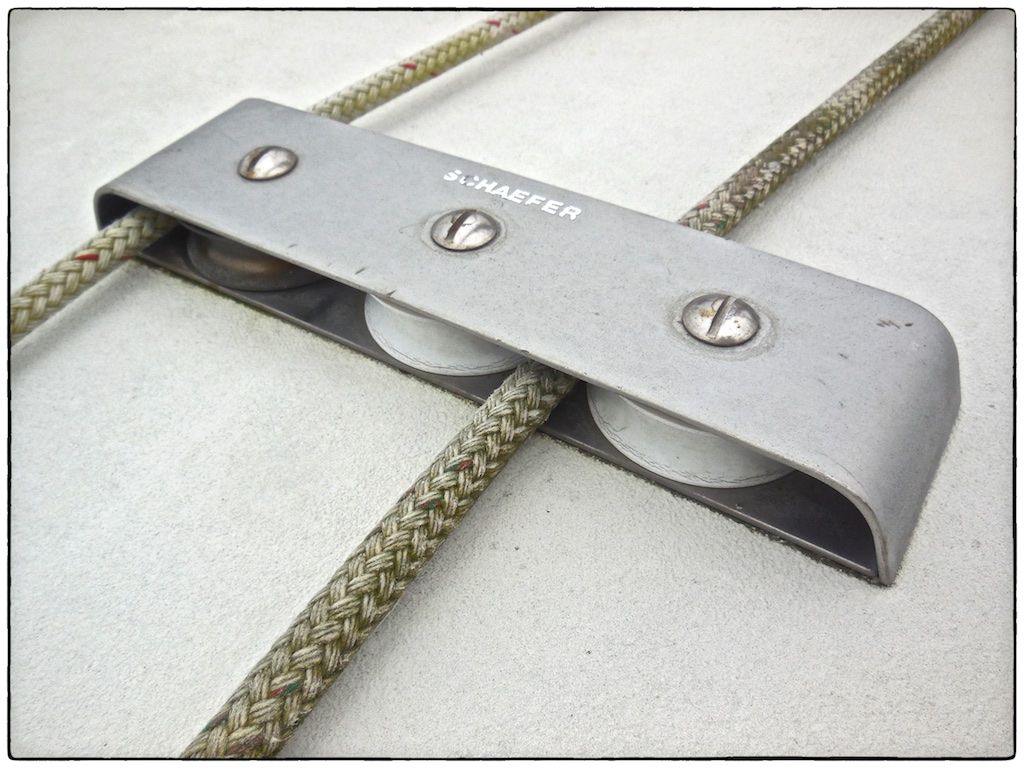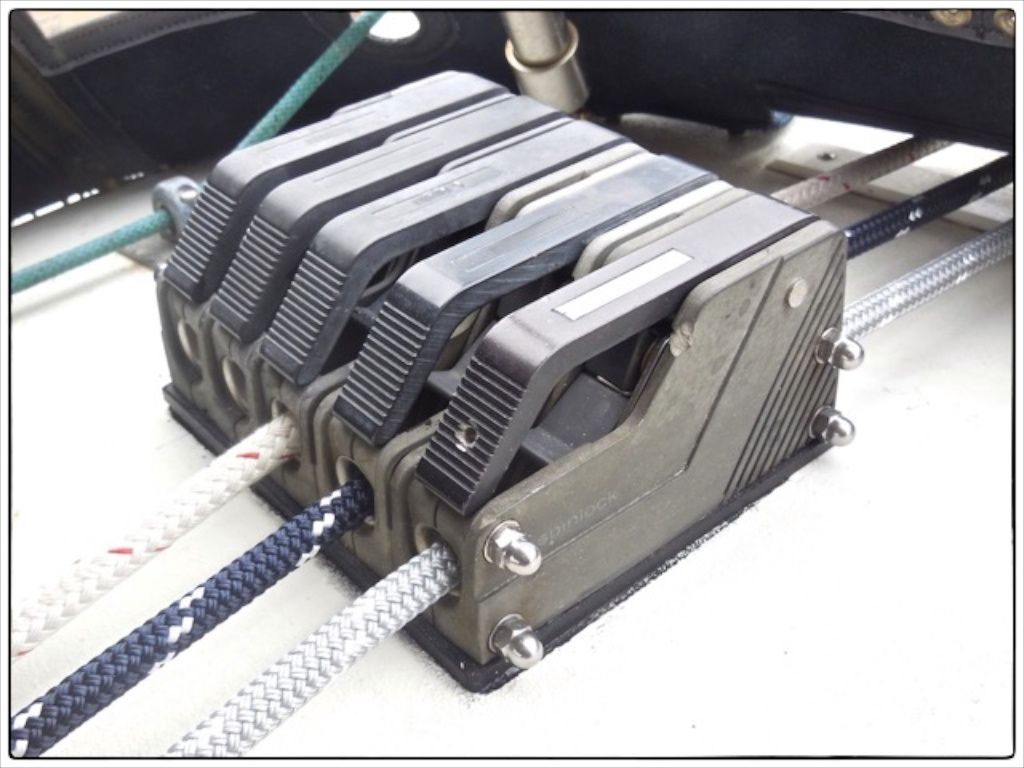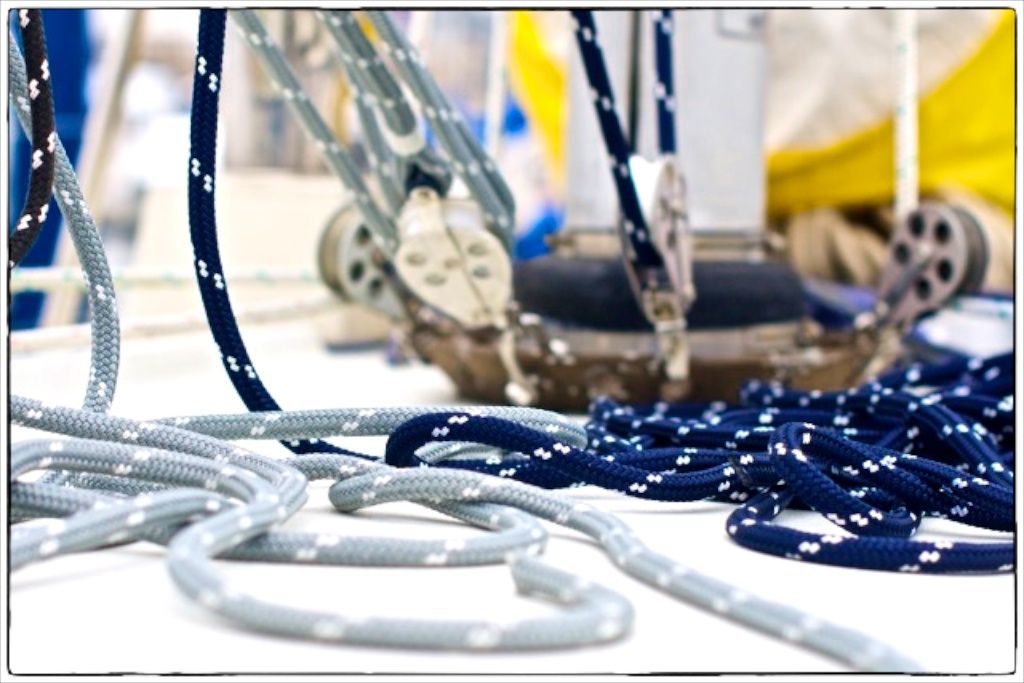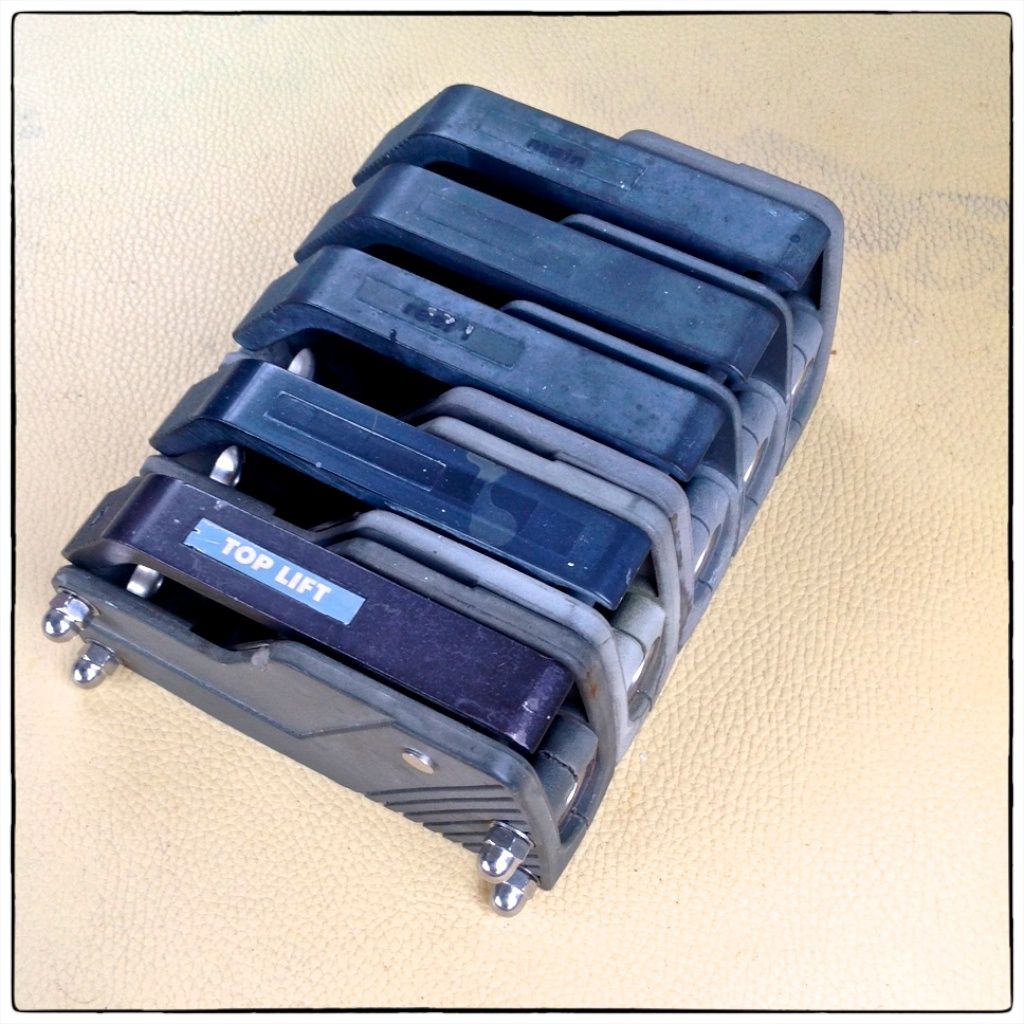Leading Lines Aft - Part 3
--Blogpost written by Bob
This is the third blogpost in the series about leading lines aft. This blogpost deals with the involved deck gear changes: a new 6-sheave deck organizer and two additional rope clutches. I've been working on this project as weather allows.
New Deck Organizer
 |
| This is the old three-sheave deck organizer on the cabin top of s/v Rainy Days. This had to be changed to a 6-sheave deck organizer. |
Upgrading the deck organizer to a double stack 6-sheave unit was part of this effort. The old Schaefer deck organizer was mounted with three 5/16-inch diameter bolts--these also held the bushings for the three sheaves.
The new Harken deck organizer is mounted with four 1/4-inch bolts at the corners of the unit. This means I had to plug the old holes with epoxy, drill new oversized holes, dig out some of the balsa core material around the hole, fill them with epoxy, and re-drill the holes to the proper size for the mounting bolts.
 |
| The new 6-sheave deck organizer (with ball bearings) by Harken has less friction than the old deck organizer. This will be filled with colorful lines when this project is complete. |
Additional Rope Clutches
I had three old Spinlock-brand rope clutches that have served me well over the years in which I've I owned s/v Rainy Days. Rather than replace them, I managed to buy three more rope clutches of the same vintage (one on eBay and two at Bacon's). One of the rope clutches didn't function and I'm keeping it for spare parts. My plan was to gang all five rope functioning clutches together using long bolts. As I got further into the details, I found that the original bolts holding the sides in place were metric (M6) and 8-1/2-inch long bolts were not readily available in that size.
 |
| My original 3-gang rope clutch system is shown above. |
I managed to find a threaded stainless steel rod (M6 x 1 meter long) at Fawcett's that I could cut to make the four (7-3/8-inch long) studs to span the five rope clutches. So, I removed the existing three rope clutches from the cabin top and began the process of cutting four studs and connecting all five rope clutches together.
Usually the first application of epoxy sinks down into the hole as it cures. In this case because of the total plug thickness (about an inch), I used three applications of epoxy to fill the holes, the last one containing West #407 filler.
As with other deck gear, I drilled oversized (3/4-inch diameter) holes and filled them with epoxy before drilling for the actual size (1/4-inch diameter) of the mounting bolts.
I decided to add a 1/4-inch thick plastic base plate under the gang of rope clutches. Because the cabin top has a slight curvature on the outboard side of the rope clutches, I used two 1/16" thick (different width) shims under the outboard side of the base plate--they are held in place by the bolts that fasten the rope clutches. This idea saved a lot of time, the alternative being to shape the base plate with a sander or grinder.
 |
| The completed 5-gang rope clutch installation is shown above. Only three lines are currently in use--more will be added as this project progresses. |
Summary
We have to move the mainsheet turning block slightly forward to eliminate some interference with the wider gang of rope clutches. While I had the mainsheet turning block removed, I decided to get another angled base made from black plastic to save the future maintenance efforts associated with varnished teak base.
The black plastic used for the rope clutch base and the new base for the mainsheet turning block is King Starboard. King Starboard is high-density polyethylene that contains a proprietary blend of UV inhibitors for superior service in the marine environment. I've used King Starboard in many other applications on board including new dorade boxes, jerry jug supports, etc.
More on this and the additional control lines coming soon...
 |
| At this point, our sail control lines are lying on a big pile near the base of the mast. |
Thanks for following our blog!




No comments:
Post a Comment